One of the most ancient cities in the world, Yerevan is the capital city of the Republic of Armenia.
Yerevan, located on the edge of the Hrazdan River, occupies 223 square kilometers are and has 1.1 million residents. Consequently, over a third of the total population of Armenia lives in Yerevan.
Yerevan is not a part of any province (or “marz” in Armenian). The city is bordered by the following provinces: Kotayk from the north and the east, Ararat from the south and the south-west, Armavir from the west and also Aragatsotn from the north-west.
Yerevan has twelve administrative districts. Each district has its leader.
After some basic information, let’s see the history of this ancient city.
THE HISTORY OF YEREVAN
In the 9th century BC, in the Armenian Highlands, on the shores of Lake Van, the Armenian Kingdom of Van appeared. It is also called Urartu, Biainili or simply Araratian kingdom. The founder was King Arame. In addition, the Kingdom of Van was one of the most developed states of the time.
King Argishti the First was the 5th King of Van. In 782 BC, in the 5th year of his reign, he founded Erebuni fortress-city, today’s Yerevan. It became one of the most important cities of the country. The date of the Erebuni establishment is well-known from the cuneiform record left by King Argishti. The cuneiform is as follows;
“By the greatness of God Khaldi, Argishti, the son of Menua, for the power of the country of Biainili and for the horror of the enemies, built this impregnable fortress and called it the city of Erebuni. Argishti says, ” The land was desert, here I did great things.” By the greatness of God Khaldi, Argishti, the son of Menua, is a mighty king, the king of Biainili, the owner of the city of Tushpa.”
According to the scientists, this preserved historical record shows that 782 BC is Yerevan’s birth date. Erebuni-Yerevan was also founded 29 years before Rome. It has the same age as Babylon, Nineveh, and also Persepolis. Unlike these three, however, Erebuni-Yerevan has become one of the most flourishing cities of the 21st century. It is also where Argishti settled 6600 soldiers with their families.
- Erebuni Fortress founded by King Argishti I in 782 BC
A century later, the administrative and political center moved to the Teishebaini fortress, which was founded by Rusa II in the southwestern part of the present-day Yerevan, but, most probably, the Scythians destroyed Teishebaini during the years of Urartu’s fall (590 BC).
Erebuni continued its existence in the Persian era as well. Additionally, the empire of Achaemenians (553 – 330 BC) was one of the world strongest states of the Ancient World. Armenia was also the 13th satrapy there. After some time, the empire divides into 2 parts: northern and southern with Erebuni and Van as the centers respectively. Thus, Erebuni again becomes an administrative and a political center.
There were coins found dating back to 478 BC. This indicates the existence of international trades there. Perhaps at that time, Armenians began to pronounce Erebuni as Erevuni. There are also arguments, that Erevuni was the center of Eastern Armenia in Persian satrapy.
The Armenian Kingdom
After the Alexander Macedonian invasion, Armenian independent statehood gets restored in 330 BC. The dynasty of Yervanduni established in the 6th century (680- 201 BC) takes the Armenian throne. Artashesian dynasty (190-1 BC) then replaces the Yervanduni.
Armenian kings abandon former Persian administrative centers of Van and Erebuni. The center of the state finally moved to Ararat Valley.
Not far from Erebuni capital cities Armavir, Yervandashat, Artashat, and during the reign of Arshakunis (66 – 428), Vagharshapat and also Dvin are built. Erebuni is finally deprived of the status of the administrative-political center.
Yerevan is also mentioned in the 3rd-century Manichaeism time text. It says that next to the Christian community, one of the students of Mani (Persian artist, founder of Manichaeism ) established a Manichaean community in Yerevan. According to the record, Yerevan was ruled by a monarch.
In the 5th century, one of the oldest churches of Yerevan, St. Poghos-Petros Church was built, which got destroyed in 1931.
After the fall of the kingdom of Van, Armenian bibliographic sources seemed to keep silent about the 1000-year history of Yerevan. It is then mentioned in the 7th century, in the book “Girq Tghtotsi” or “Book of letters”. Historian Sebeos states that during the Arab invasion, Yerevan was a commercial and prosperous city.
Yerevan During The Period of Arabs and Turkic Tribes
In the 7th century, the Arabian Caliphate appeared in the Arabian Peninsula. Its establishment is due to the new religion of Arabs, Islam. Arabian Caliphate soon became the world’s largest and most developed state.
Arabs seize Yerevan in 658. In 850, the prince and the future king of Armenia, Ashot Bagratuni, liberated Yerevan from the troops of Dvin and joined it to his estates. At that time the new fortress of Yerevan was built on the bank of the Hrazdan River. Yerevan then begins to develop as an Armenian medieval city.
In the 11th century, the Turkic tribes, Seljuks, Mongols, Tatars, and later Turks and Oghuzs entered the Middle East.
The Zakaryan princes, with the help of the Georgian Kingdom, temporarily liberate Eastern Armenia. The Turkic tribes, however, leave their irreparable trace. Major cities in Armenia became deserted or destroyed.
Moreover, Turkmen Kara-Koyunlu tribes were united under the rule of Amir-Saad. In 1410, Armenia was under the control of the Kara Koyunlu tribe. At the end of the 14th century, they founded the governorship of Yerevan. Armenians called it The Hole of Saad (or Saadapos; pos means a hole). The tribes of the Ağ Qoyunlu came to replace Kara-Koyunlu. Their name literally translates “black and white sheep grazers.”
They soon invaded Yerevan. In 1400, Timur, a Turco-Mongol conqueror invaded Armenia and also Georgia. He took under control the survived local people. More than 60,000 became slaves. In addition, many districts together with Yerevan were depopulated.
Although Kara Koyunlu collected heavy taxes from Armenians, as an Armenian historian Thomas of Metsoph states, the early years under their rule were actually quite peaceful. They also made Yerevan the center of the newly formed Chukhur Saad or Chghur Saad administrative territory.
The peaceful period, however, ended between 1420 and 1436. At those times, Qara Iskander made a “desert” out of Armenia and destroyed it.
The fall of the Armenian Kingdom of Cilicia took place in 1375. In 1441, the seat of the Armenian Church, which used to be in Sis, was transferred back to Vagharshapat near Yerevan. Consequently, since 1440, Yerevan became the main cultural, economic, and also administrative center in Armenia.
Yerevan Under The Iranian And Russian Rule
In 1501, the Safavid dynasty of Iran with Shah Ismail I as the leader conquered many parts of Eastern Armenia including Yerevan. A year later, in 1502, Yerevan became the center of the new administrative territory of Iran, the Erivan Beglarbegi. Yerevan was under the Iranian rule for the following 3 centuries as well.
In 1582-1583, however, the Ottomans with Serdar Ferhad Pasha as their leader, briefly took Yerevan under their control. In addition, Ferhad Pasha also built the Erivan Fortress on the ruins of about one thousand-years old ancient Armenian fortress.
The control of the Ottomans ended in 1604. That’s when the Persians again captured Yerevan as a result of the Ottoman-Safavid War.
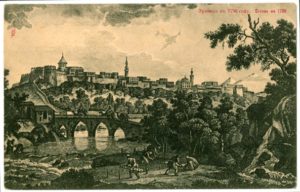

Yerevan in 1796 in the Qajar era, by G. Sergeevich. An Armenian church is seen on the left and a Persian mosque on the right
The ruler of Persia between 1588-1629, Shah Abbas I, ordered the deportation of the Armenians to Persia. Consequently, Yerevan lost most part of its Armenian population. By that time, Armenians were only 20% of the population, yet Persians, Kurds, Tatars along with Turks were 80%.
Due to the strategic significance of Yerevan, the city passed through the hands of the Iranian and the Ottoman Empires repeatedly until the beginning of the 19h century.
In the 19th century, a Russo-Persian War (1826–1828) took place. Russian troops captured Yerevan on 1 October 1827. Ivan Paskevich was the general. Iranians gave up in 1828. After being under the Iranian rule for 3 centuries, Eastern Armenia including Yerevan became a part of the Russian Empire and was also called “Armenian Oblast.”
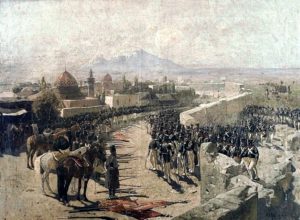

Franz Roubaud’s painting of the Erivan Fortress siege in 1827 by the Russian forces under leadership of Ivan Paskevich during the Russo-Persian War (1826–28)
This lasted till the Empire collapsed in 1917. Russians started to sponsor the resettlement process of Armenians from Persia and Turkey. After the resettlement, the number of the Armenian population of Yerevan increased up to 54%.
Yerevan was the seat of Armenian Oblast from 1828 to 1840. In 1840, the Armenian Oblast, however, no longer existed. A new, much larger province; the Georgia-Imeretia Governorate appeared. In 1850 the territory of the former oblast was reorganized into the Erivan Governorate. It covered a 28,000 sq km area. Yerevan became the center of the governorate.
On October 1, 1879, Yerevan started to own the status of a city through the edict of Alexander II. In 1881, The Yerevan Teachers’ Seminary and also the Yerevan Brewery were opened. After that, in 1887, the Tairyan’s wine and brandy factory opened its doors. Other factories were also opened during the 1890s.
The Saint Gregory the Illuminator Church was opened in 1900. Electricity (1907) and telephone lines with eighty subscribers (1913) appeared in the city. New buildings of European style came to replace the old ones. The first public library of Yerevan together with a railway line was built in 1902.
Yerevan, generally, developed a lot both economically and politically under the Russian rule.
As the Russian Empire collapsed in 1917, the Erivan Governorate also dissolved. Hence, Yerevan was the center of the Governorate until that year.
YEREVAN: THE FIRST REPUBLIC OF ARMENIA
In the beginning of the 20th century, Yerevan was a small town and had only 30,000 population.
On May 28, 1918, as a result of the heroic battles of Sardarabad, Bash-Aparan, and also Gharakilisa, the First Republic of Armenia was born. Yerevan, which has over 400 years of history as an administrative-political center, becomes the capital of the newly independent republic.
On October 30, 1918, in Mudros, Antanta and the Ottoman Empire signed a ceasefire. Ottomans recognized their defeat and left the WWI. Consequently, the borders of Armenia were restored, including the entire state of Yerevan.
The administrative-political bodies were moved to Yerevan and consulates were opened. Hundreds of Armenians both Eastern and from Western Armenia started to live in Yerevan. Some of them were refugees. In 1919, Yerevan State University was opened. Many Diaspora Armenians began to express their willingness to invest in newly independent Armenia.
Armenian-Russian negotiations started in Moscow in 1920. In mid-October, during the Turkish-Armenian war, the second round of negotiations started in Yerevan. On October 28, Armenians and Russians signed a preliminary agreement of reconciliation.
According to the agreement, Russia had to force the Turks to withdraw their troops till 1914. Also, force them to recognize the rights of Nakhijevan and Zangezour. Armenia, in its turn, had to abandon the Treaty of Sevres. Armenia also had to grant a transit road to the Soviet Red Army, so that they would be able to transfer armies, weapons, and ammunition to Turkey.
An agreement was signed on December 2 in Yerevan, according to which Armenia became sovereign.
Under The Soviet Rule
The Soviet period owns a special place in the history of Yerevan. Armenian SSR leaders tried to make Yerevan very beautiful and also separate its name among other capitals in the world.
Under the rule of Sargis Kassian, a great deal of work took place in 1920-1921 in order to put into operation industrial enterprises, put an end to hunger and epidemics, open schools, clean the streets, and squares.
Alexander Myasnikyan invited various talented Armenians to move to Armenia and live in Yerevan. Among them were: painter Martiros Saryan, composer Alexander Spendiaryan, poet Shushanik Kurghinyan, architect Alexander Tamanyan and many others.
Tamanyan was to design the new plan of Yerevan.
Theaters, cinema studios, a number of factories as well as new faculties in the universities were opened in Yerevan. A modern urban economy was created in Yerevan, the construction of water supply, sewerage, residential houses, schools, administrative buildings, and tram were launched.
The State Academic Theater of Opera and Ballet was opened in 1932. Since 1933, the institutes of Polytechnic, theatrical, conservatory, pedagogical and other institutions have been opened. In 1935, the Armenian branch of the Academy of Sciences of the USSR was opened, based on which, in 1943, Hovsep Orbeli and a number of Armenian scientists had to create the Academy of Sciences of the Armenian SSR.
In 1965 a mass protest and demonstration in connection with the 50th anniversary of the Armenian Genocide were organized. This was a unique rally in its nature and was one of a kind in the history of the USSR. Sometime later the construction of Tsitsernakaberd memorial complex came to an end.
In 1968, Yerevan celebrated its 2750th anniversary.
In 1978, the millionth inhabitant of Yerevan was born. At that time, there were not many cities in the world with exactly one million population.
Singing fountains were also opened in the square, the second in the world after Paris. Youth Palace, Zvartnots International Airport, Yerevan Metro, Sports & Music Complex were reconstructed. St. Sargis Church was also reconstructed. The new Lenin Square was built.
Briefly About Alexander Tamanian
In 1904 he graduated from the St. Petersburg Higher Artistic Academy of Fine Arts. His first architectural work is the main layout plan of Yerevan (for 150 thousand residents). It became the basis for the future plans of the capital.
In 1934 the architect started the layout plan of the “Great Yerevan” (for 500 thousand residents), which was left unfinished. In 1925-1933 Tamanian also made the layout plans for Gyumri, Vagharshapat, Stepanakert, Nor Bayazet (now Gavar), Akhta (now Hrazdan) and other residences.
Tamanyan’s masterpieces, the Government House and the Opera and Ballet Theater are distinguished by their high-quality features. The theater building has two halls with one common stage, with the conversion of the halls and the stage.
The sister of the architect Magdalen Tamanian-Schiessen said that once in St. Petersburg her brother was watching projects and photos of Armenian architectural monuments. During that time, he told his friend, “You will see, I’m going to live in Armenia and construct it.”
During his life, all his projects remained incomplete. The construction of Central Square, Ring Park, Main Avenue, Northern Avenue, and many other buildings lasted for decades. The Northern Avenue was only built in our time. Many ideas of Alexander Tamanian remained unfulfilled at all.
Tamanian is so valuable for Armenian that there are a statue, a museum-institute and a street with his name in the Kentron district. You can find the statue in the center of Yerevan on Tamanyan street, near the Cascade complex.
The Independent Armenia
On March 1, 1991, the Supreme Council of Armenia made a decision to hold a referendum on leaving the USSR on September 21, 1991.


The majority of citizens (2.43 million or 94.4%) said yes to the question “Do you agree that the Republic of Armenia is an independent democratic state outside the USSR?” 117 observers from 25 countries also stated that the referendum was fair and “transparent.” Yerevan became the capital of the Republic of Armenia.
The third Republic of Armenia had a number of problems. Bad economy, ruins left by a devastating earthquake causing massive deaths of Armenians, as well as the issue of Artsakh.
On October 16, 1991, presidential elections took place in Armenia for the first time. With the overwhelming majority of votes (83%), Levon Ter-Petrosyan became the president. Gagik Harutyunyan was the vice-president.
YEREVAN NOWADAYS
Yerevan is the capital of the Republic of Armenia and the largest city. It is one of the oldest cities in the world. It is located on the bank of the Hrazdan River which flows through Ararat valley. Yerevan is also the largest city in Armenia in terms of the population.
The city is the most important transport hub of Armenia, as well as the political, economic, cultural and scientific center. It has two airports. Since 1981, Yerevan an underground started to operate in Yerevan.
The name of Yerevan originates from the name of the Urartian era Erebuni Fortress, from which the city of Yerevan was born. In addition, Yerevan is more than 2,793 years old. The city is considered the capital since 1918 and is the 14th capital in the history of Armenia.
Here is a list of all Armenian capitals throughout the history:
- Tushpa-Van /832 BC–590 BC/
- Armavir /331–210 BC/
- Yervandashat /210-176 BC/
- Artashat /176-77 BC, 69 BC-120 AD/
- Tigranakert /77–69 BC/
- Vagharshapat /120-330/
- Arshakavan /350s/
- Dvin/336–428/
- Bagaran /885–890/
- Yerazgavors /890–929/
- Kars /929–961/
- Ani /961–1045/
- Sis /1080-1375/
- Yerevan /1918–1920, 1991–present/
Besides being the political and administrative center of Armenia, Yerevan is also the main economic and cultural center. About 30% of the population of Armenia is in Yerevan. Up to 98% of higher education and research institutions, also the overwhelming majority of banks and stock exchanges are concentrated in Yerevan.
3 of the most popular universities in Yerevan:
Here are all the embassies of foreign countries, the offices of the United Nations (UN) and other international organizations and representatives.
The city looks like an amphitheater. The downtown is the center of the city, and the districts go up the “slopes.”
In 2012 UNESCO declared Yerevan as the World Book Capital.
Above are the photos of Matenadaran. It is a world-class museum and holds one of the world’s richest depositories of ancient manuscripts and books. You can find it on the upper end of Mashtots Avenue, in the center of Yerevan. Matenadaran is the pride of Armenian culture.
The capital city, which had been undergoing severe tests and trials during its long history, is now the main center of education, science, technology, culture, and also trade. There are constantly major changes in Yerevan. New roads, restaurants, shops and residential buildings.
CULTURE
Culture is a very important part of every nation. Yerevan has been one of the most important centers of Armenian culture since the 19th century. After becoming the capital of the independent Armenia, it also became the main focus of its development.
The culture of Yerevan is very diverse and rich. This is largely due to the fact that for centuries Yerevan has been under the control of different cultures. The long periods of coexistence of various cultures have affected Yerevan in many ways.Here you can see
Here you can see the modern western culture along with the influence of the east civilization. You will find temples of the pagan times, mosques, and the first Christian monasteries. Even the traditions, customs, and holidays are the result of the crossing of different cultures.
The city consists of unique architectural solutions. According to the project of Yerevan’s chief architect Alexander Tamanyan, the “mental” continuations of all the main avenues of Yerevan lead to Mount Ararat.
Almost all the buildings of the historical center of Yerevan are made of pink tufa, thanks to which Yerevan has received the name of the “Pink Capital”.
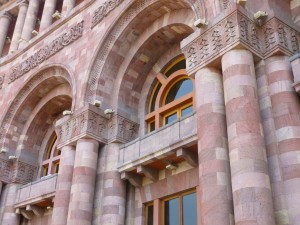

With all the changes and developments, this ancient city became a valuable treasure. It is forever in the hearts and souls of ten million Armenians all over the world.
THE HYMN OF YEREVAN
On September 23, 2004, as a result of competition for Yerevan hymn, the song “Erebuni-Yerevan” took the first place. The music of was composed by Edgar Hovhannisyan and the lyrics by famous Armenian poet Paruyr Sevak.
Yerevan dartsats im Erebuni
My ancient Erebuni that has become Yerevan.
Du mer nor Dvin, mer nor Ani.
You are our new Dvin, our new Ani.
Mer poqrik hoghi du mets yerazank,
…A dream gracing our small corner of the earth,
Mer dare karot, mer qare nazank.
After centuries of longing, with rocks carved into facades of lace.
Yerevan dartsats im Erebuni,
Yerevan, my ancient Erebuni,
Darer en antsel baits mnatsel es patani.
Centuries have come and gone, but you remain youthful.
Ko Masis horov, ko Araks morov
With your father Masis and your mother Arax at your side
Metsanas darov, Yerevan.
May you prosper, Yerevan.
Kyanqum amen ser linum e tarber,
In life, each love is unique,
Isk menk bolors enq qeznov harbel.
But we are all taken with love for you.
Taq e sere mer, shek qareri pes
The warmth of our feelings is reflected in your stone
Hin e sere mer dzik dareri pes.
Compressed and solid.
Yerevan dartsats im Erebuni,
Yerevan, my ancient Erebuni,
Darer en antsel baits mnatsel es patani.
Centuries come and go, but you remain youthful.
Ko Masis horov, ko Araks morov
With your father Masis and your mother Arax at your side
Metsanas darov, Yerevan.
May you prosper, Yerevan.
Watch the famous Armenian singers Emmy and Essai sing the Erebuni Yerevan song.
In addition, here are the emblem and the flag of Yerevan:
- The Emblem of Yerevan
- The Flag of Yerevan
PLACES TO VISIT IN YEREVAN
Yerevan has many sights and attractions for its visitors and residents. The Pink City has so many places to offer. We will introduce you to a few of them.
Cascade Complex
Originally, it was formulated by the famous architect Alexander Tamanyan and was realized by architect Jim Torosyan. The Cascade project is one the of most successful and beautiful ones.
Cascade serves as a link between the center of Yerevan and the Victory Park. There you will also find the Cafesjian Center for arts, a place for the most unique and impressive exhibitions ever.
Erebuni Museum
In 1968, when Erebuni celebrated its 2750th anniversary, the Erebuni museum opened its doors to the many foreign and local visitors. There you can find valuable and unique samples of the Urartian culture.
The open-air museum holds over 1500 exhibits which were found during the excavations of the ancient Erebuni fortress in 1950-1959. No doubt it is one of the most interesting and significant parts of the architecture of Armenia.
Other than Erebuni Museum, you can also visit the History Museum of Armenia, the Armenian Genocide Museum, Tamanian Museum, House-Museum of Aram Khachaturian, Picture Gallery, Sergey Paradzhanov Museum, and Yerevan History Museum.
Erebuni Fortress
In the south part of Yerevan, there is this ancient and beautiful archaeological site which never fails to amaze locals and also tourists. These are the remains of the ancient Urartian fortress of Erebuni citadel. It is also known as Arin-Berd which means a fortress of blood.
The Citadel is unique and also was built for multiple purposes. On the left side of the entrance, there is the temple of God Khaldi. On the right, there are economic structures and also grain storehouses.
Mother Armenia Statue
The story of the statue of Mother Armenia dates back to the 20th century. You will find it in one of the most amazing parks in Yerevan, the Victory Park.
The statue is the personification of the country. It also guards Armenia against the evil and the enemies and symbolizes strength and pride.
The Republic Square
The Republic Square is currently one of the most favorite and lovely places in Yerevan. It is right in the center of the city. Some of the most important concerts are also held here with a lot of people arriving both from different regions of Armenia and abroad as well.
In the Republic Square, you can also find the singing and dancing fountains. You will hear various songs both Armenian and foreign.
Read more about the Republic Square and the singing fountains here.
Vernissage Market
Vernissage is a large open-air market. It is full of traditional Armenian jewelry, souvenirs, handicrafts and also a wide variety of other items. It is an awesome place especially for foreign visitors who want to take a “piece of Armenia” with them.
Vernissage is also a good place to get to know the culture of Armenia and have a full day excursion exploring various unique and interesting things.
Churches in Yerevan
Churches in Yerevan represent the ancient stone architecture of the city.
They preserve the imprints of the earliest and also the medieval architectural periods, and today, they stand in various parts of Yerevan fulfilling the city’s Christian spirit.
Opera House
Opera House or the Opera Building consists of the Aram Khachaturian Hall and the Alexander Spendiarian Opera and Ballet National Academic Theater.
It was designed by architect Alexander Tamanian. It is also one of the examples of Soviet architecture.
Sports and Concerts Complex
Karen Demirchyan Sports and Concerts Complex or simply Hamalir (means complex in Armenian). As you can see from the name, the complex includes 2 main halls, the concert, and the sports hall. Other than these halls, there is also the Hayastan conference hall special for political summits.
Many events and concerts also take place there. One of the most significant one being the Junior Eurovision Song Contest.
The Blue Mosque
Persian Mosque, Sky Blue Mosque, and also Gok Jami are the various names of the Blue Mosque. It was built in the 18th century by the local governor Husayn Ali Khan under the Iranian rule. The construction started in 1760.
The name is Blue Mosque because of the dominating blue color on the entrance and the tiles. It has an inner courtyard, meeting halls, and also a theological school or madrasa.
Tsitsernakaberd – The Genocide Memorial
Under the rule of the Ottoman Empire, Armenians experienced the worst period of their existence. Massive murders and tortures took place. It became known as the Armenian Genocide. Every single Armenian will always remember those events and the scars it left.
Today, there is a memorial dedicated to the 1.5 million victims of the Armenian Genocide. The memorial is called Tsitsernakaberd.
Read more about the Armenian Genocide here.
THINGS TO DO IN YEREVAN
There are various things you can do in Yerevan. As a result, you will spend a very good time and at the same time, you will also explore the city and everything it has to offer.
The first thing you might like to do is very simple. Go for a walk in the city center!
Start from the Republic Square with its dancing fountains and shows. After that, you can get to Abovian street with its old houses and beautiful buildings.
You will see a completely different image once you get to the Northern Avenue. High-rise buildings with modern architectural solutions, western style cafes and well-known shops will amaze you.
Walking around the city center is a simple yet a very good way to see the history of the city, from the Persian period to the Soviet times. Other than that, you will also see the modern side of Yerevan.
Continue your tour in Yerevan by walking to the National Academic Theater of Opera (Opera House) and Swan Lake. A little farther, you will see the Cascade stairs. Tourists gave the name “Limitless Steps to the Sky” to the stairs.
- Swan Lake
The giant stairwell of Cascade connects the Kentron area with Monument. People can both climb the stairwell or can take an elevator.
One more thing you can do is look over the city while climbing the stairs. The view is absolutely breathtaking, especially at night.
Almost everywhere in the city, you can see beautiful and comfortable cafés, restaurants and clubs, where besides enjoying the pleasant music you can also taste dishes of different cuisine.
Jazz and karaoke clubs, discos, gambling centers, contemporary sports centers and also spa salons provide interesting entertainment.
This article can be very useful to you.
For shopping lovers, there are many brand stores. The most famous malls of Armenia, Yerevan Mall, and Dalma Garden Mall will satisfy all needs of the shopaholics! You should also visit Vernissage. Click here to find out why!
There are also a lot of parks in the city where you can have some rest from walking, have a picnic and generally spend a good time. Lovers’ Park is the most popular one. It is also the oldest park in the city.
English park is another great place for a picnic. It is an awesome place for photoshoots, especially during weddings. Tumanyan Park and Buenos Aires Park are also very lovely and cozy parks.
- Lovers’ Park
- Lovers’ Park
During hot summers, Yerevan Water World is the perfect place. This huge water park consists of 12 waterslides, 7 outdoor and 3 indoor pools, and also 2 children areas. This makes it a great place for the whole family. There are also food stands and a restaurant.
Go to indoors and you will also find Aquatek. You can relax at the Aquatek Spa Hotel, which has geysers, a spa, and a fitness club. There are also 2 large pools, a pool for children, and wall-climbing facilities in this area.
Not only summers can provide you with enjoyable experiences but also winters!
In the cold winter months, one of the large outdoor pools at Yerevan Water World becomes a 500 meters ice rink. One can spend a very good and fun time there.
Another option for the same kind of entertainment is the Swan Lake right next to the Opera House. It is a very beautiful place to skate around. In addition, there are also skate rentals available.
- Ice rink Swan Lake
- Ice rink Water World
For football lovers, Yerevan offers several football stadiums where you can enjoy football matches. In addition, the largest stadium is Hrazdan Stadium. Also, the home ground for the national football team is the Vazgen Sargsian Republican Stadium.
- Hrazdan stadium
You are guaranteed to spend an unforgettable time in Yerevan, no matter if you are a local or a foreigner. With all the sights and attractions, its historical heritage and also rich culture, you will never get bored and will repeatedly have new things waiting for you to explore!
So don’t hesitate to visit this ancient yet breathtakingly beautiful city Yerevan!


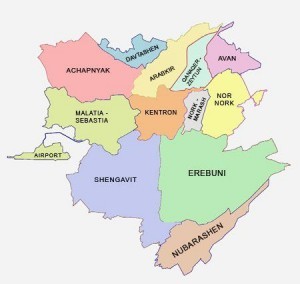
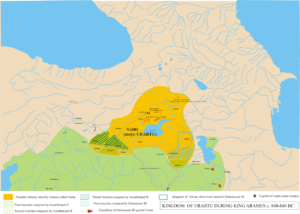


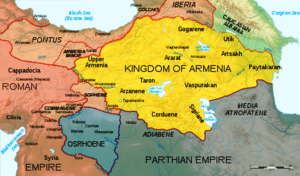
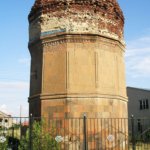

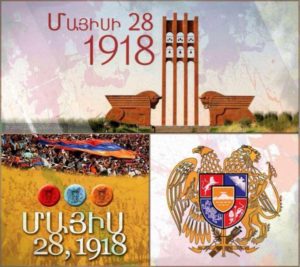
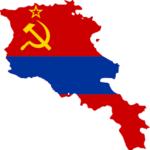
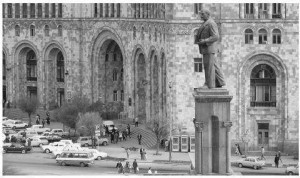


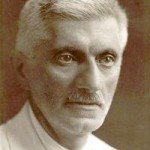
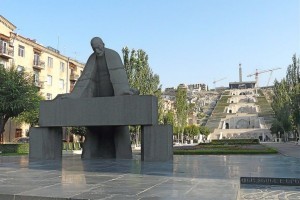


































































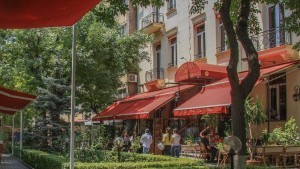
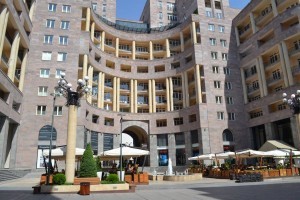





















Leave a Comment